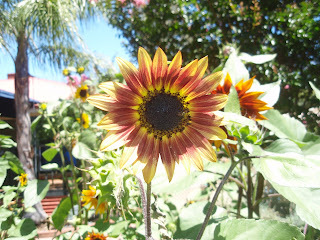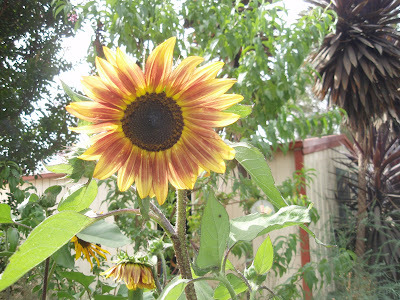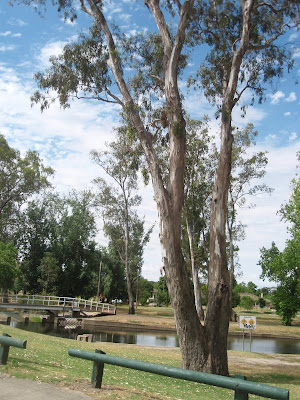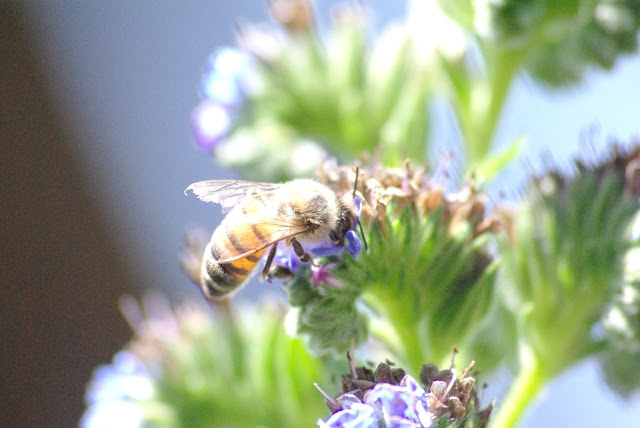Some months ago I decided to plant some sunflower seeds to grow into a living cubby to amuse Ellie and Evie. Seeds of the variety 'Evening Sun' were bought from organic supplier Green Harvest after I saw a picture in their catalogue and was attracted by the range of colours. Who knew that sunflowers come in other colours than yellow?
The seeds had a good germination rate and were surprisingly easy to grow. After the seedlings were transplanted into a rough circle for the cubby and the leftovers scattered around the feral flower field, they grew strongly. They are now in full flower and I'm surprised every day by how much pleasure they give me. Though most of the flowers are basically shades of yellow, they range from russet, to bronze to mauvish/pinkish tones. The stems are multibranched, with the most vigorous plants having numerous flower heads. Even on the one plant, individual flowers differ in their colour variations.
So far Ellie has visited once since they have been blooming and seemed to be intrigued by the idea of having a flowery place to play in.
In addition to the pleasure of the flowers, I thought I remembered reading somewhere that they atttracted beneficial insects to the garden. A little research found a report of a study done by scientists at the University of Florida. The two-year study found that '. . . sunflowers attract and play host to numerous beneficial insects'. These include lacewings, ladybirds, bees, big-eyed bugs, parasitic wasps, green lynx spiders, predatory stink bugs and assassin bugs. A further finding was that '. . . crop vegetation within 1 m of sunflowers exhibited nearly the same abundance and diversity of beneficial insects as did the sunflowers themselves'.
Until today I had noticed only bees on the flowers. An inspection of them while wearing my glasses revealed numerous insects scurrying over the leaves and inside the flowers. There are many ants, a few ladybirds and a variety of small insects that I don't know the names of.
So, sunflowers are surprisingly beneficial as well as surprisingly attractive. The one drawback I've found is that they do need more water than I had expected. They have even stood up to the blustery southerly winds quite well with very little damage. Next spring I'll plant them among the vegies where they will be of more practical benefit and no extra watering will be needed as the vegies are regularly watered anyway.

















































